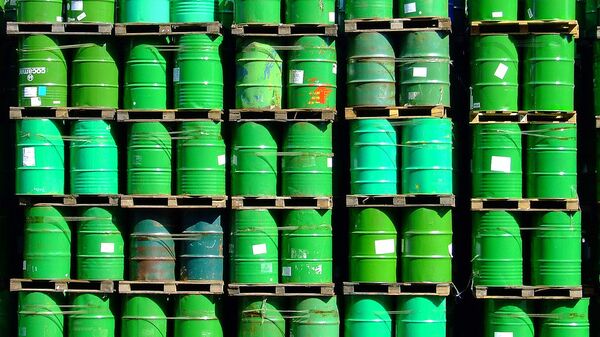The price of oil has fallen precipitously — dropping nearly 60% since June. And while the average American may be appreciating relief at the pump provided by $45-a barrel crude, everyone from the oil companies themselves to the Wall Street financiers that lend to and trade on their business has been panicking over the falling profitability of the industry.
— Jesse Colombo (@TheBubbleBubble) March 16, 2015
The Strategic Petroleum Reserve was created after the Arab oil embargo of the 1970s as an emergency pool of oil in case of sudden instability. But in recent years, as the US has become less dependent on foreign oil, and thus less vulnerable to fluctuations abroad, there's more often been talk of shrinking the overall reserve.
In March 2014, the US surprised markets by selling off 5 million barrels of oil from the SPR in a test sale, while prices were high, which some interpreted as an attempt to lower prices as a jab at Russia for perceived aggression in Ukraine. And legally, the government is supposed to replace anything sold off within a year.
Some of the funds from the 2014 sale were used to create a gas reserve in the Northeast "in order to address some of the resiliency needs in the region made evident by Superstorm Sandy in 2012," a DOE spokeswoman told Reuters. The funds left over after that project are what is being used for the current low-price buyback.
While it could be construed as simply an attempt to buy low aftering selling high, others see it as a move to help a flagging industry whose profitability may be more of a government concern that the purchasing power of someone filling up a gas tank.
"When the government starts buying crude oil, it's signaling that they're picking a bottom for the market," Carl Larry, director of business development at Frost & Sullivan told Reuters. "This has to be more of a financial play."
— Alasdair Pal (@AlasdairPal) March 4, 2015
While it remains to be seen what impact this will have on the oil market, for perspective, 5 million barrels is just over half of a day's production in the US at current rates. The SPR is the largest emergency supply of oil in the world with a capacity for over 700 million barrels.
The crude would be bought for delivery sometime in June or July most likely, though some may arrive as early as May.
After a five-year boom in production and a decrease in foreign oil imports, the government is expected to consider decreasing the overall size of the SPR. Any such plans are expected to be part of the DOE's quadrennial energy review, due to be released in the coming weeks.



